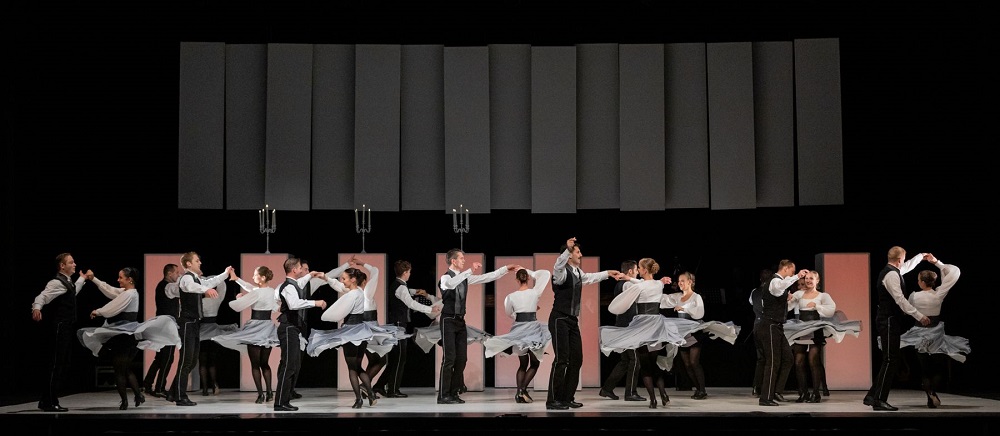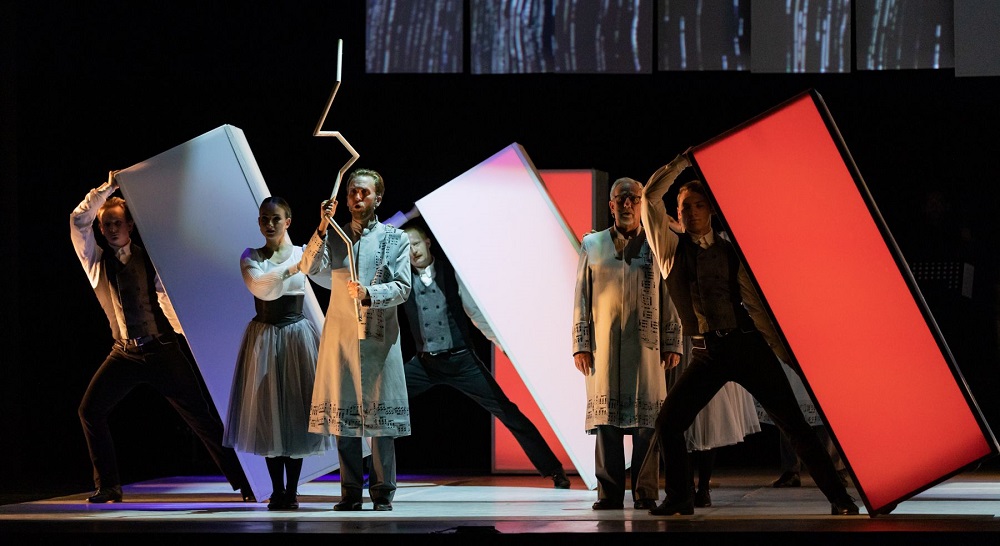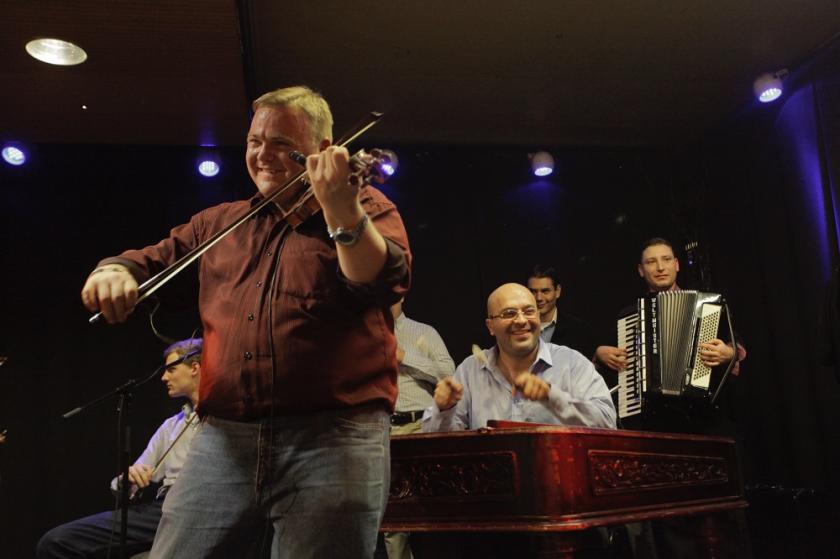There's a famous saying that Hungarians are in the middle of Europe. From the West, we have Bach and Palestrina holding our hands; from the East, the Caucasian Turkic peoples. Other nations still need 1,000 years to understand what it means to be Hungarian. In Liszt Mosaics, we want to show our culture, our history and show what the Hungarian soul consists of.
When we go abroad, we show it to the world. They feel how important it is – and then they start to search for their roots as well. When we played at the celebration for Prince Charles’ 70th Birthday, we were presented to the audience as being about to give them “seven and a half minutes of Hungary”. It was a pleasure for us. Last year, we celebrated the century of Hungarian and British diplomatic relationships. Prince Charles sent a video message for us and he mentioned two names. One was that of Imre Makovecz, a famous Hungarian architect, the other that of the Hungarian State Folk Ensemble. It was an honour.
Our company is 70 years old, and it is the basic pillar for Hungarian folk dancing and for its performance. It has 20 dancing couples and an orchestra of 11 musicians. We perform Hungarian folk dances and folk music, but we're also performing other dances and music from the Carpathian Basin. Our performances consist of our artistic beliefs, of preserving the folk traditions of Hungary and its neighbours.  Hungary is a world leader in researching folk music, folk dances and folk art. We’ve researched at least hundreds years of history, collecting styles from rural places in Hungary, going to the villages to collect our music and dances from their memories and traditions, as it is important to preserve the peasant-style of dancing, but also our own urban performance inspired by them. Even though we're performing to contemporary audiences it is very important for us to keep in mind our culture. And it is important to go back to our roots and show our people the way it’s done.
Hungary is a world leader in researching folk music, folk dances and folk art. We’ve researched at least hundreds years of history, collecting styles from rural places in Hungary, going to the villages to collect our music and dances from their memories and traditions, as it is important to preserve the peasant-style of dancing, but also our own urban performance inspired by them. Even though we're performing to contemporary audiences it is very important for us to keep in mind our culture. And it is important to go back to our roots and show our people the way it’s done.
Liszt Mosaics features music from a collection of genius musicians, including Liszt, Paganini and Chopin, as well as Bartók. Bartók and Liszt are totally different figures and represent two phases of Hungarian classical and folk music. They were both outstanding pianists and composers of genius. The main difference between Bartók and Liszt (other than the generation gap) is that Bartók really focused on collecting folk music from the whole Carpathian Basin and on implementing those pieces into his own style. Liszt didn't focus on the rural parts of Hungary but on the big cities; there is an urban atmosphere to his music.
And that is the main reason that in the first act of Liszt Mosaics, we focused on the music of Bartók, which we perform together with the Royal Philharmonic Concert Orchestra and renowned violinist Alexandre Da Costa. In the second act we focus on the work of Liszt as a Hungarian, as a priest and as a virtuoso.  I don't perform in Liszt Mosaics – I participated in the beginning of the work as I wrote one part of the arrangements. For me, it is really interesting to see how Liszt’s contemporary music appears in the performance. For example, we rearranged one of his pieces that was originally played on two pianos for two cimbaloms and orchestra. We rearranged the Second Hungarian Rhapsody for a Gypsy band. What is also interesting for me to see is how Liszt’s virtuosity appears throughout. We also wanted to show the impact on Liszt’s work of the music of his friends Chopin and Paganini. So what really matters for me is to see the virtuosity of Liszt on the piano and Paganini’s virtuosity on the violin.
I don't perform in Liszt Mosaics – I participated in the beginning of the work as I wrote one part of the arrangements. For me, it is really interesting to see how Liszt’s contemporary music appears in the performance. For example, we rearranged one of his pieces that was originally played on two pianos for two cimbaloms and orchestra. We rearranged the Second Hungarian Rhapsody for a Gypsy band. What is also interesting for me to see is how Liszt’s virtuosity appears throughout. We also wanted to show the impact on Liszt’s work of the music of his friends Chopin and Paganini. So what really matters for me is to see the virtuosity of Liszt on the piano and Paganini’s virtuosity on the violin.
The basic arrangements were made by Gyula Farkas 50-60 years ago, and they are still our main source. Farkas was a really great teacher and master of Hungarian gypsy music. What I did was bring in elements of the rural sounds into this essentially urban music. We also had the challenge of incorporating a couple of instruments that are not presented in the symphonic orchestra. This is part of the process of arranging the performance for modern audiences.
It is wonderful to return to the United Kingdom in the year of the Queen’s Jubilee. We have been invited four times to perform in front of the Royal Family. The first occasion was when we celebrated the anniversary of the Hungarian Revolution of 1956; Prince Charles was present with Margaret Thatcher. We also performed for the 60th and 70th birthdays of Prince Charles. It is really fantastic for us: people working in Buckingham Palace pointed out that most ensembles are invited once or twice, and we had the opportunity to perform for them at least four times. It's really nice to see that. Above all, we want British audiences to feel and understand the real and honest cultures and traditions of Hungary.














Add comment